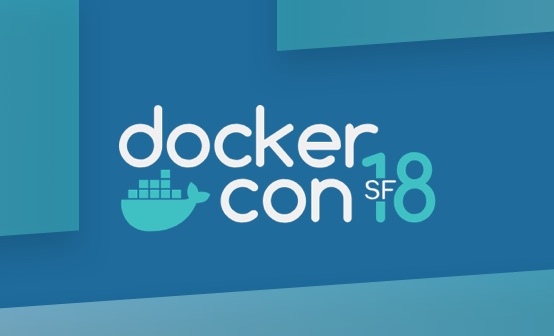
Looking Forward to DockerCon 2018

From the perspective of a Docker user and pundit, there’s little doubt that up until now, 2018 has proven to be a super intriguing and news-packed year for Docker. Celebrating 5 years “in production” this year, Docker, both as an organization and a technology, has sailed through some turbulent waters.
As DockerCon 2018 approaches, I thought this a good opportunity as any to take a look at the recent events and place them into a perspective that can help us try and predict whether, in another 5 years, DockerCon 2023 will even be a thing.
A brief history lesson
While it’s true that Docker and containers have become synonymous, Docker did not actually invent container technology. Docker containers in their initial form were basically extensions of LXC — Linux Containers, which have been around since 2008. Even before that, container technology can be traced back to 2000 and FreeBSD Jails.
Still, Docker can easily be considered as the main driver of the technology.
Providing developers with an easy way to build, package and deploy services in a lightweight, portable and self-sufficient containers, Docker had great timing as well, fitting in perfectly with emerging DevOps practices, facilitating easier automation as part of Continuous Integration (CI) and Continuous Deployment (CD) methodologies.
All research into container adoption point to the conclusion that container adoption is constantly on the rise. Logz.io’s DevOps Pulse survey had 70% of respondents claiming they use containers, and a Datadog study cites a 40% year-by-year increase in container adoption. Standardizing containers and coinciding with monumental shifts in methodology, Docker pushed containers into the mainstream.
Along came orchestration
Perfect conditions for smooth sailing? Not so fast. The advent of orchestration platforms heralded a certain momentum change.
Containers might be easier to build, package and deploy but they are a management and monitoring headache. Concerns in regards to high availability management, disaster recovery, and scalability gave rise to a new type of software called container orchestration systems. Responsible for scheduling, memory allocation, security and network, these systems are in charge of one main mission — to ensure all images and containers are operating as expected.
Today, there are three main container orchestration systems — Docker Swarm, DC/OS and Kubernetes. Docker Swarm was released in 2015 and was Docker’s answer to what it rightly recognized as THE challenge for continued growth in container adoption. Kubernetes was actually introduced earlier, but has risen to dominance over the past year.
What explains the rise of Kubernetes is a different topic, but this dominance forced Docker to reshuffle its business plan. Headlines asking “Can Docker survive Google?” or “Is Kubernetes now bigger than Docker?” asked the question of whether Docker is slowly being pushed out of the picture. Whereas in the past, applications used to provide “Docker-native” support, they are now boasting “Kubernetes-native” support.
Last month, Docker released Docker Enterprise 2.0, and guess what featured in that release? Full support and integration of Kubernetes, signifying that Docker decided to join the rest of the pack (Docker also received the Certified Kubernetes™ certification). While Docker and Kubernetes are not competitors and even compliment each other, Docker Swarm and Kubernetes are, and while the two orchestrators are supported together in the latest Docker EE, the future of the former is not clear.
So in the case of Kubernetes, rather than swimming upstream and against the current, Docker decided to accept reality and go with the flow. What this means for the future of the company’s business model is unclear, but for us users, this means a win.
What to expect in DockerCon 2018
From an organizational perspective, 2018 has proven to be just as tumultuous as 2017. The co-founder of the company and its CTO, Solomon Hykes, stepped down and joined the company’s other co-founder and ex-CEO, Ben Golub, who left the year before.
DockerCon 2018 is, therefore, taking place during an interesting time for Docker, to say the least.
Up to this point in time, Docker has raised close to $250 million in total investments and has a community of millions of users. Containers and microservices are mainstream, and there can be no denying that Docker has played a huge part of that and continues to do so. It does not take a genius to predict that DockerCon this year will be all about demonstrating these numbers and this causality.
DockerCon 2018 will be a chance for Docker to present an “all business as usual”, if not “full steam ahead”, image. With an excellent lineup of speakers and record-breaking attendance (for DockerCon), Docker will have the numbers and content to back it up.
Looking to the future
Yes, some questions about Docker’s direction and past decisions remain open. The move from Docker to Moby, for example (yes, Moby is the official name of Docker the program). The question of Docker’s leadership. The rise of serverless and its impact on container practice.
Yet, all studies into container adoption show that containers are here for the long run. According to a 2017 study by 451 Research, “the application container market will explode over the next five years. Annual revenue is expected to increase by 4x, growing from $749m in 2016 to more than $3.4bn by 2021, representing a CAGR of 35%.”
And as long as containers remain the cornerstone and the key building block for applications, Docker has a huge advantage over other frenemies in the industry. Right now, I think it is safe to conclude, Docker can look into the future with careful confidence.
I will still be keeping track of how many times I hear “Kubernetes” mentioned using a Twitter integration with ELK. Just saying 🙂
Get started for free
Completely free for 14 days, no strings attached.




